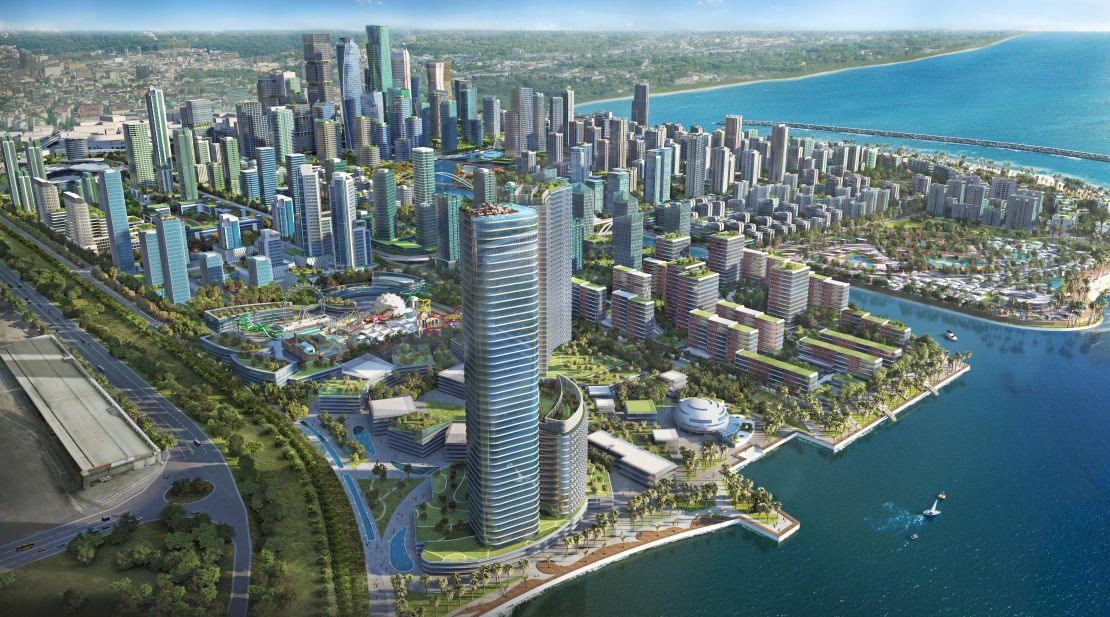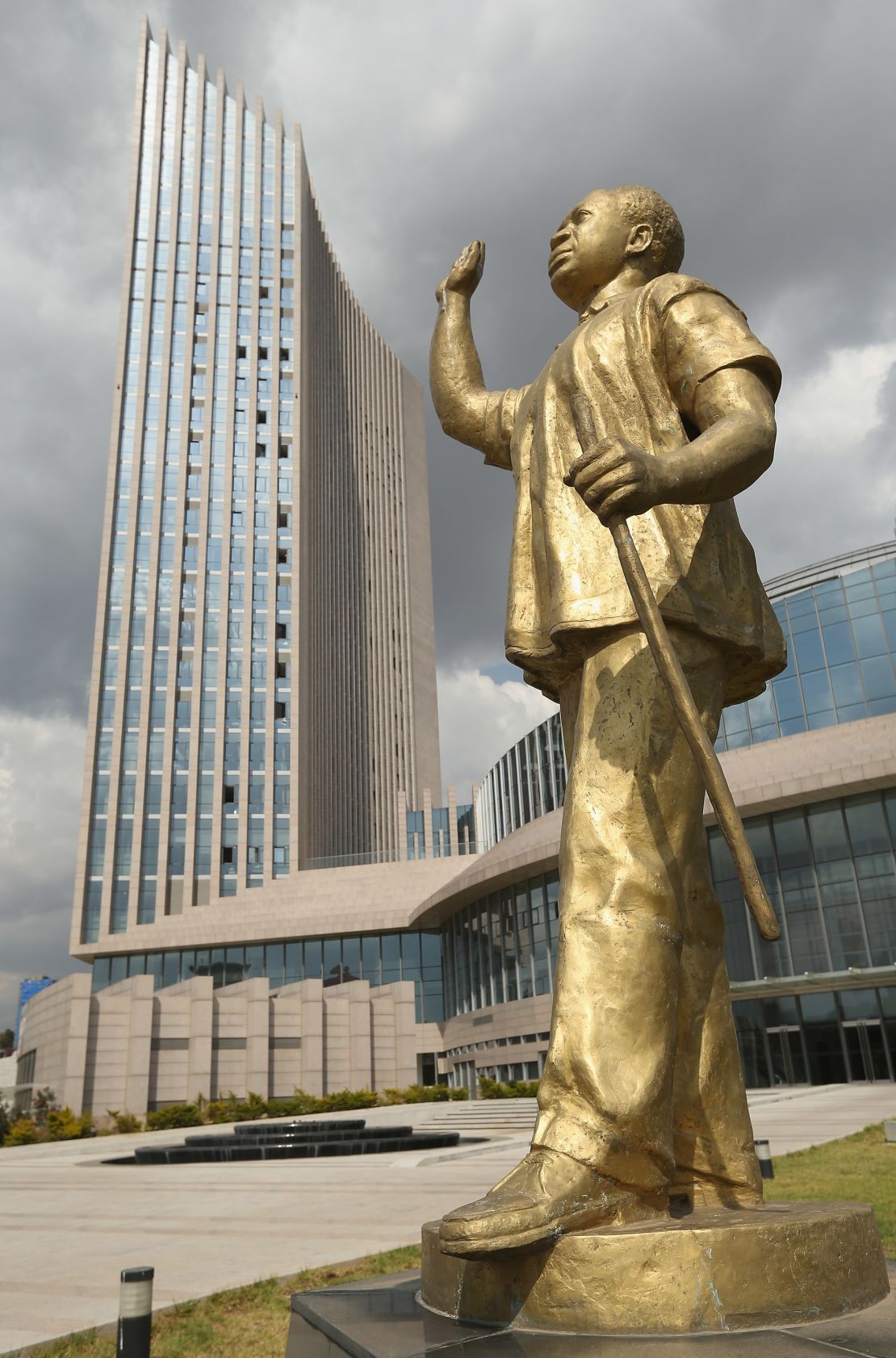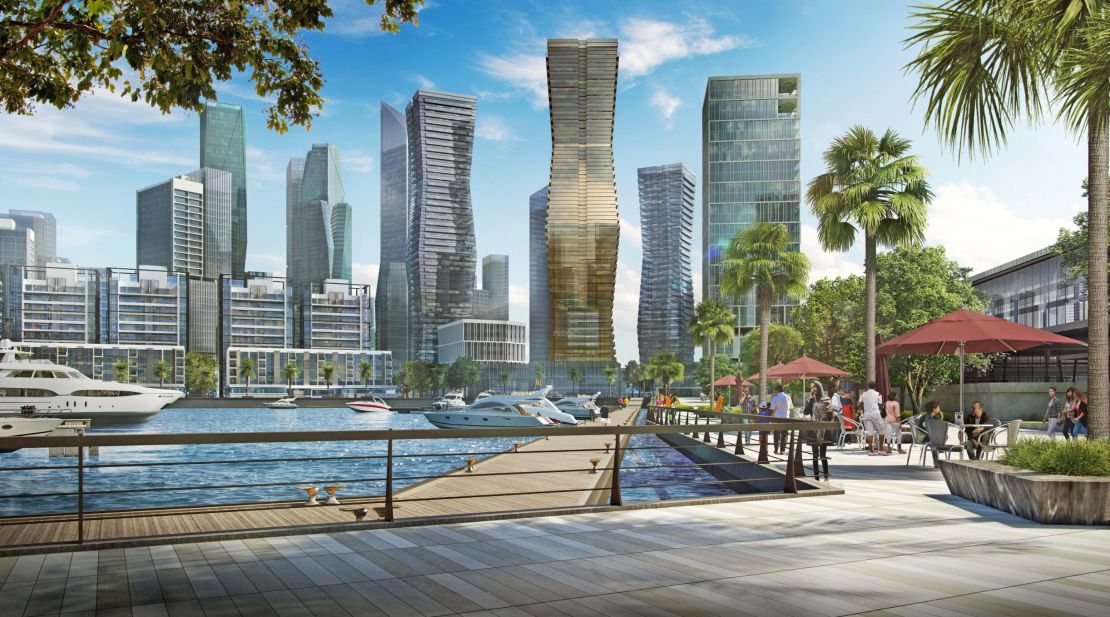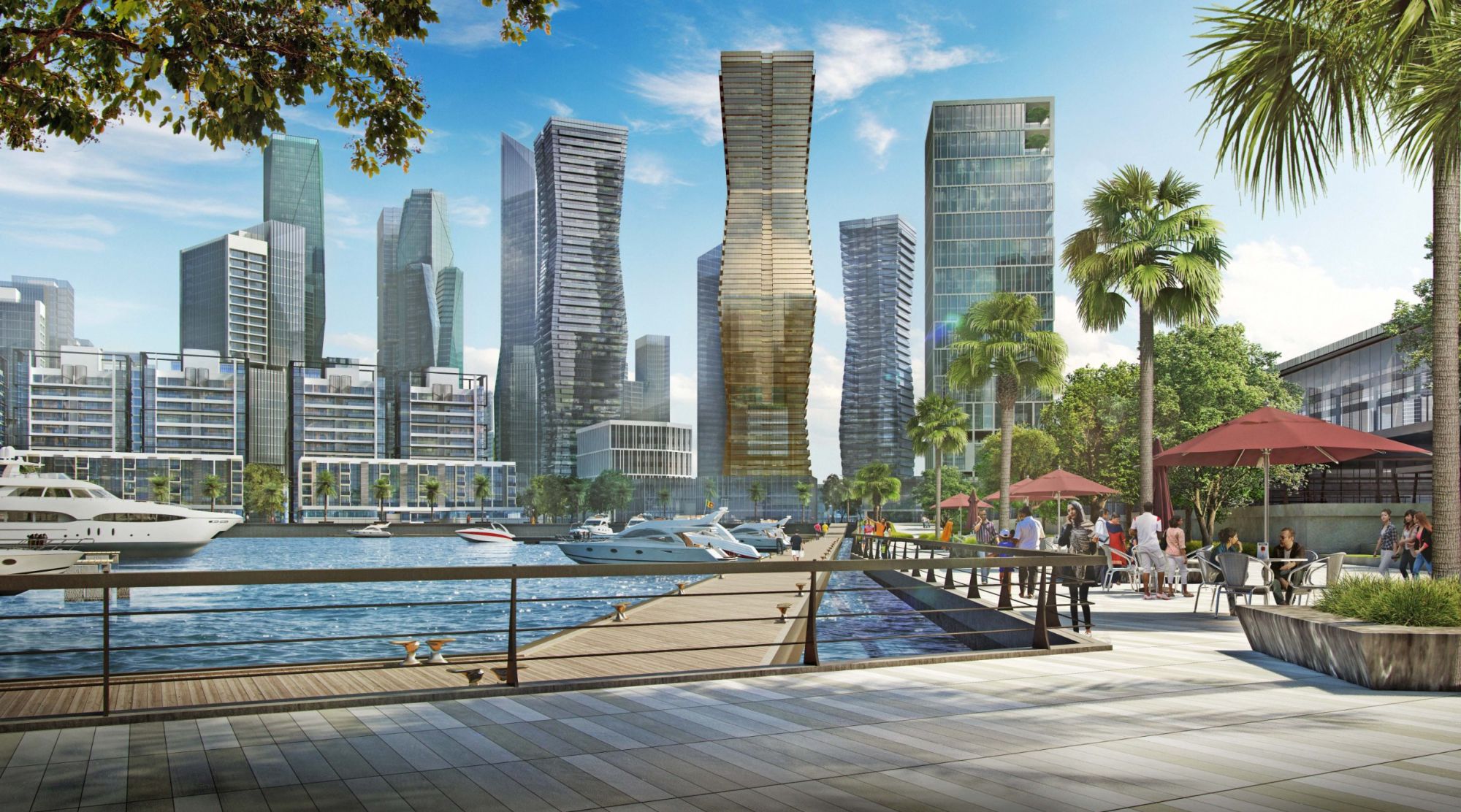Editor’s Note: Nate Berg is a journalist covering cities, architecture and urban planning.
A square mile of new land spreads out from the shores of Colombo, Sri Lanka. Crews are 80% through reclaiming approximately 65 million cubic meters of sand from the Indian Ocean floor.
The land will form the foundation of Port City Colombo a massive new district of high-rise office towers, luxury apartments, tree-lined canals and beachfront villas.
Adjacent to the city’s central business district and a recently upgraded port, the $1.4 billion project is touted by its developers as “a world class city for South Asia.”
For South Asia, perhaps. But not by South Asia. The Port City development, like a number of other infrastructure and building projects throughout Colombo, is being primarily financed, designed, engineered and even constructed by China.
These Chinese buildings are coming to a city near you
Through generous loans from China’s government-owned banks (and low-price bids from state-run or -supported construction companies), developing countries like Sri Lanka are becoming construction sites for Chinese-designed housing blocks, office towers, hotels and urban developments.
Less than a mile away from Port City Colombo, Sri Lanka’s Chinese-driven future is already coming into focus. The first concrete shell of a Chinese-built development, named Astoria, has already been erected. Once completed, it will represent a model of urbanism already widespread in China: a tower of luxury apartments popping out of a ground-level shopping mall filled with high-end global brands.
While these projects may offer a boost to the local economy, they don’t fit into their urban surroundings, according to Dr. Janaka Wijesundara, an architecture professor at the University of Moratuwa, just outside Colombo.
“(Chinese developments) have certainly made a huge change in the city skyline and the density of the city,” he said in an interview. “Our studies show that high-rise emergence in Colombo is happening without having proper understanding [of the local conditions] through any serious urban design studies.”

Acting chair of the Sri Lankan government’s Urban Development Authority (UDA), Jagath Munasinghe, admitted that overseas design consultants have shown “less sensitivity towards local situations and the settings of the locality.” But he stressed that the situation is not specific to Colombo, and said steps are being taken to address these concerns.

“The UDA now insists that any project designed by foreign consultants shall essentially have a local counterpart,” he said in an email, explaining that proposed building developments must, by law, be endorsed by a locally registered and chartered architect.
A spokesperson for China’s Ministry of Foreign Affairs, Hua Chunying, described Chinese-backed property developments in Colombo as “entirely commercial cooperation projects” during a press conference in April. “I believe the issues arising in the process of commercial cooperation should be resolved through friendly negotiation by those relevant business partners,” she added.
The Chinese firms behind the Port City Colombo project, the state-owned China Communications & Construction Company and its subsidiary, the China Harbour Engineering Company Ltd, did not respond to requests for comment.
From ‘aid’ to profit
Charlie Xue, City University of Hong Kong architecture professor, has studied China’s overseas building efforts from the past five decades. He classifies most of them as “architectural aid” – projects gifted to other countries by the Chinese government or state-owned enterprises in order to “foster trade, seek economic interest and expand cultural influence.”
Shen Dingli, a professor at the Institute of International Studies at Shanghai’s Fudan University, described the motivations behind China’s overseas construction drive as twofold.
“The first (reason) is to offer a facility, as the host countries need it,” he said in an email interview. “The second is to build it as a symbol of friendship, which extends China’s friendly presence and soft power.

The Chinese government distances itself from accusations that it uses building projects to secure greater influence in the developing world. Questioned about the country’s role in two new African construction projects – new headquarters for the Economic Community of West African States (ECOWAS), and parliamentary buildings in Zimbabwe – Ministry of Foreign Affairs spokesperson, Lu Kang, described China’s motives as benevolent in nature.
“As is known to us all, poor infrastructure is one of the main bottlenecks choking Africa’s development and progress,” he told CNN at a press conference in March.
“The infrastructure projects constructed with the assistance of China are welcomed by African countries and their people.”
“It goes without saying,” he added, “that supporting the African countries and other developing countries in enhancing their capacity building and achieving common prosperity still remains an important aspect of China’s diplomacy.”

Regardless of motives, the result for developing nations is usually new civic buildings, such as Colombo’s Bandaranaike Memorial International Conference Hall, built in in 1973, which stands less than two miles away from the Astoria. Other examples include the ark-like National Theatre of Ghana in Accra, the Algiers Opera House, and the sports facilities found across Africa as a result of what is often known as “stadium diplomacy.”
One of the most high-profile buildings donated by China is African Union’s headquarters in Addis Ababa, Ethiopia, which opened in 2012. The 544,000-square-foot concrete complex was designed by the Tongji Architectural Design Group and built by the China State Construction Engineering Corporation. Estimated to have cost $200 million, the project was funded fully by the Chinese government.
Earlier this year, a published report in the French daily, Le Monde, alleged that Beijing spied on the African Union through the computer systems it helped install. Citing anonymous sources, Le Monde reported that data was transferred from the AU systems in Ethiopia to its servers in Shanghai. China’s foreign ministry called the Le Monde report, “groundless accusations.” The AU called the report, “baseless.”

Having tallied up China’s overseas construction activities from the past half-century, Xue of the City University of Hong Kong, believes there to have been more than 230 state-funded building projects. He says that the pace and scale has increased significantly in recent years.
“Currently there are another 200 or more projects overseas, either planned or under construction, from railways, bridges and highways to (commercial and residential) building projects,” he said in a phone interview.
Much of the overseas developments funded by China take the form of infrastructure. More is expected as a result of the One Belt, One Road initiative, a roughly multi-trillion-dollar strategic foreign investment project that aims to build a new Silk Road trading route connecting China and about 60 other countries, to Asia, the Middle East, Europe and Africa. From railroads in Africa to power plants in Pakistan, Chinese investment is undertaking projects in dozens of countries.
Alongside these tools of global commerce, Chinese-run and -funded companies are engaging in urban development – the residences, hotels and office buildings to accommodate these new trading hubs.
“In the 20th century it was mainly gifts to the developing world. Now, proportionally, (that makes up) much less,” Xue said. “There are still some, but more projects will be done by private companies, or by state-run companies as part of their profit-making process.”
The ‘Chinese urban model’
Shanghai-based architect Daan Roggeveen has been tracking this new wave of overseas building since 2009 through the Go West Project, which he runs alongside researcher and writer Michiel Hulshof. The pair has extensively researched Chinese developments in Africa, studying projects in cities like Angola’s capital Luanda, where the Chinese conglomerate CITIC has built an entirely new neighborhood – complete with orderly rows of pastel-toned housing blocks resembling those found across China.
The company claims to have built 200,000 housing units in Luanda so far, with another 8,000 homes planned in a nearby municipality, Viana.
“When we do lectures about this topic in the West (…) people react very nervously, sometimes aggressively, talking about neo-colonialism and these kinds of things,” said Roggeveen in a phone interview. “As opposed to what the US does in Africa with USAID, which is non-physical as a strategy, China is very present in creating a physical environment.”
Foreign entities building abroad is nothing new, Roggeveen says, but the Chinese approach is unique.

“Many of the buildings that are being constructed by Chinese contractors are being designed in China, engineered in China and built with Chinese materials by Chinese construction workers,” he said. “Also, the visualizations in the design process are being created by Chinese rendering companies. So that means that all the bigger and smaller design decisions are made in China without taking into account the local context or local environment.”
That not only results in buildings that seem out of place, but sometimes entire urban districts that feel as if they’ve been transplanted, said Roggeveen, who is also the editor of a new book looking at China’s role in urban development worldwide. Through its own recent and rapid urbanization, China has optimized a method for building cities quickly. And as population growth explodes in Southeast Asia and Africa, China’s city building style may become the new standard.

“I think there are definitely elements of the Chinese urban model that are going to be pushed forward in the coming decade, or decades, particularly in the global south,” Roggeveen said.
This could mean more Chinese-style tower-blocks, shopping centers and built-from-scratch towns in places like Kenya, Cambodia and Sri Lanka. Roggeveen believes that this development is not necessarily a good or a bad thing, but it is unmistakably a new form and scale of city-making.
“Basically we’re talking about the globalization of architecture and urbanism,” he said.
CNN’s Tim Schwarz, Steven Jiang, Serenitie Wang in Beijing and Oscar Holland contributed to this report.














